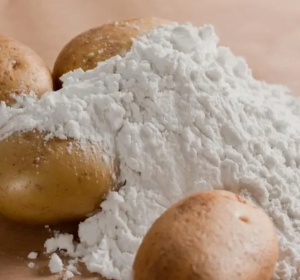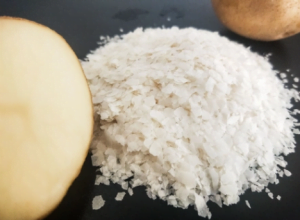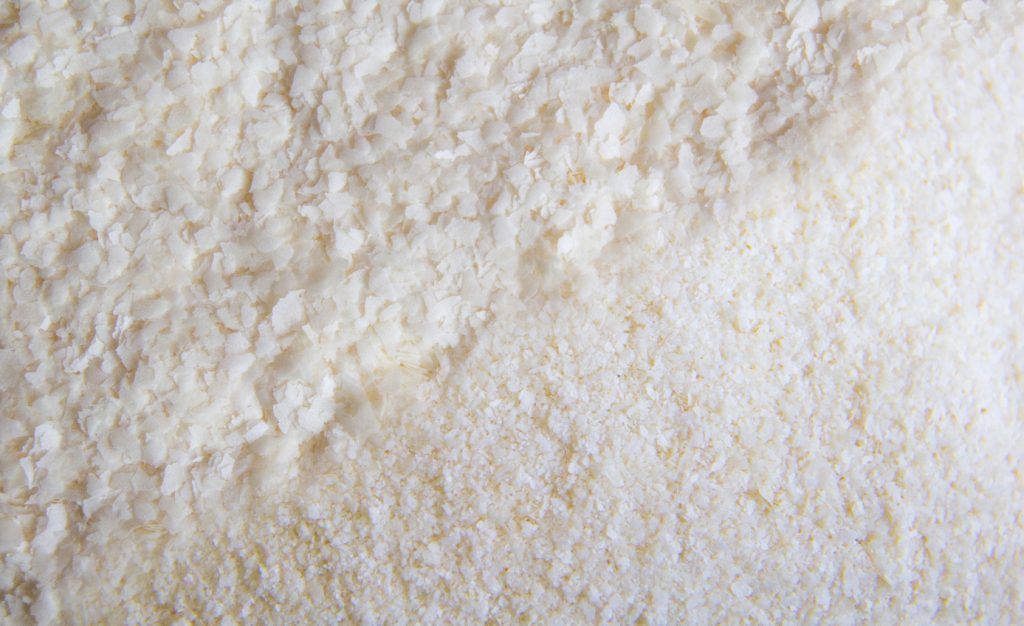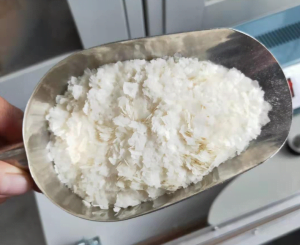ポテトフレーク vs Potato Flour, many people are familiar with both of them, which are different types of dehydrated products made from fresh potatoes, but many wonder what the differences are between them. Let’s explore their differences in different aspects here.
The Basic Differences Between Potato Flakes and Potato Flour
Appearance
As the names suggest, potato flour is a powdery product made from potatoes with excellent particles and higher density. On the other hand, potato flakes are snowflake-like with very low density.
There is also a type of potato flakes that have been ground and sifted, known as milled potato flakes. These milled potato flakes look very similar to potato flour but are still considered potato flakes. Milled potato flakes are primarily used for making seasoned マッシュポテト powders and as an additive in traditional Chinese staple foods.

Raw Materials
The production of potato flakes requires higher-quality raw materials, including specific potato varieties, size, moisture content, and freshness. Potato flour has relatively lower requirements for raw materials compared to potato flakes, though it requires higher quality raw materials than those used for producing potato starch.
Related article: ポテトフレーク | 生産に使用されるジャガイモの品種?
Production Process
- At a glance, the production processes for potato flakes and potato flour seem similar: fresh potatoes are peeled, steamed, マッシュした, and then dried. しかし, the main difference in production is the drying method.
- Potato flakes are dried using large drying drums or rollers, whereas potato flour can be dried using an oven and then ground.
- In the production of potato flakes, high-temperature, and high-pressure steam is used to convert potatoes into mashed potatoes. Under such conditions, the potatoes quickly cook and soften, minimizing nutrient loss and better meeting production requirements.
- For potato flour, boiling water is sufficient, as the focus is more on flavor rather than nutritional value.
- Due to different production demands, the applications and characteristics of these two products differ.
- In other words, you can make potato flour at home, but it’s nearly impossible to make potato flakes. Although you might create a decent potato flour that resembles potato flakes, there are still significant differences.

The Differences Between the Uses and Characteristics
The Differences in Applications
- Potato flakes are an important ingredient in snack foods and food additives. They are primarily supplied to snack food manufacturers. さらに, many baking product factories use potato flakes as a key ingredient. したがって, we can consider potato flakes as a food ingredient.
- Potato flour, however, is not used for making snack foods. It is more commonly used in baking products and home cooking, serving as a flavoring or seasoning ingredient with a potato taste.
- To some extent, potato flakes can replace potato flour, but in some food production processes, potato flour provides better results than potato flakes.
To make their differences clearer, we need to elaborate further and explain each of them in more detail.
Features of Potato Flakes
- Potato flakes are a highly standardized food ingredient. In China, we produce potato flakes according to very strict production standards. The quality of the product is reflected by several indicators, including moisture content, density, starch content, and appearance purity.
- 一般的に, standard potato flakes require a moisture content not exceeding 8%, usually around 6%. The free starch content is an important indicator, with high-quality potato flakes requiring a blue value not exceeding 500, typically between 200-300, because High starch content can produce high levels of reducing sugars, which can affect the quality of subsequent food processing.
- しかし, the way of producing potato flour can cause much more starch to come out, which results in a much higher blue value.
- As a food ingredient, stable and excellent quality is the most important factor. Using stable raw materials ensures that the products maintain consistent taste and texture. You wouldn’t want the taste of your favorite plain potato chips to vary each time you buy them, right?
- したがって, factories producing potato flakes need comprehensive quality control systems, large advanced raw material storage warehouses, and food testing laboratories.
- More importantly, one of the physical properties that determine the quality of potato flakes is their quick rehydration ability. Potato flakes are a very interesting product that can quickly absorb water and expand into mashed potatoes. This special ability makes potato flakes an important ingredient in many foods, as they can better and more fully absorb seasonings.
Features of Potato flour
- 一般的に, there are two types of potato flour: raw potato flour and cooked potato flour.
- Their uses differ in the preparation of various foods. Essentially, potato flour serves as a seasoning in our kitchens.
- The most appealing aspect of potato flour is that you can make it yourself. By selecting raw materials and processing them yourself, you can create unique and delicious flavors.
- Potato flour does not have as many product specifications as potato flakes and does not require strong rehydration ability. The focus is more on texture and potato flavor.
- Using potato flour in baking is an excellent choice. It can enhance the appearance, aroma, texture, and taste of your baked goods. Although potato flakes can achieve similar results, I recommend trying both to find what works best for you.
The End
These are my understandings and summaries of potato flakes vs potato flour. It is also worth mentioning potato starch, which is another common food ingredient. For a comparison of potato starch and potato flakes, you can read my other article: “ポテトフレーク vs 片栗粉.”
If you have any questions or suggestions for improvement, please contact me.
Martin

